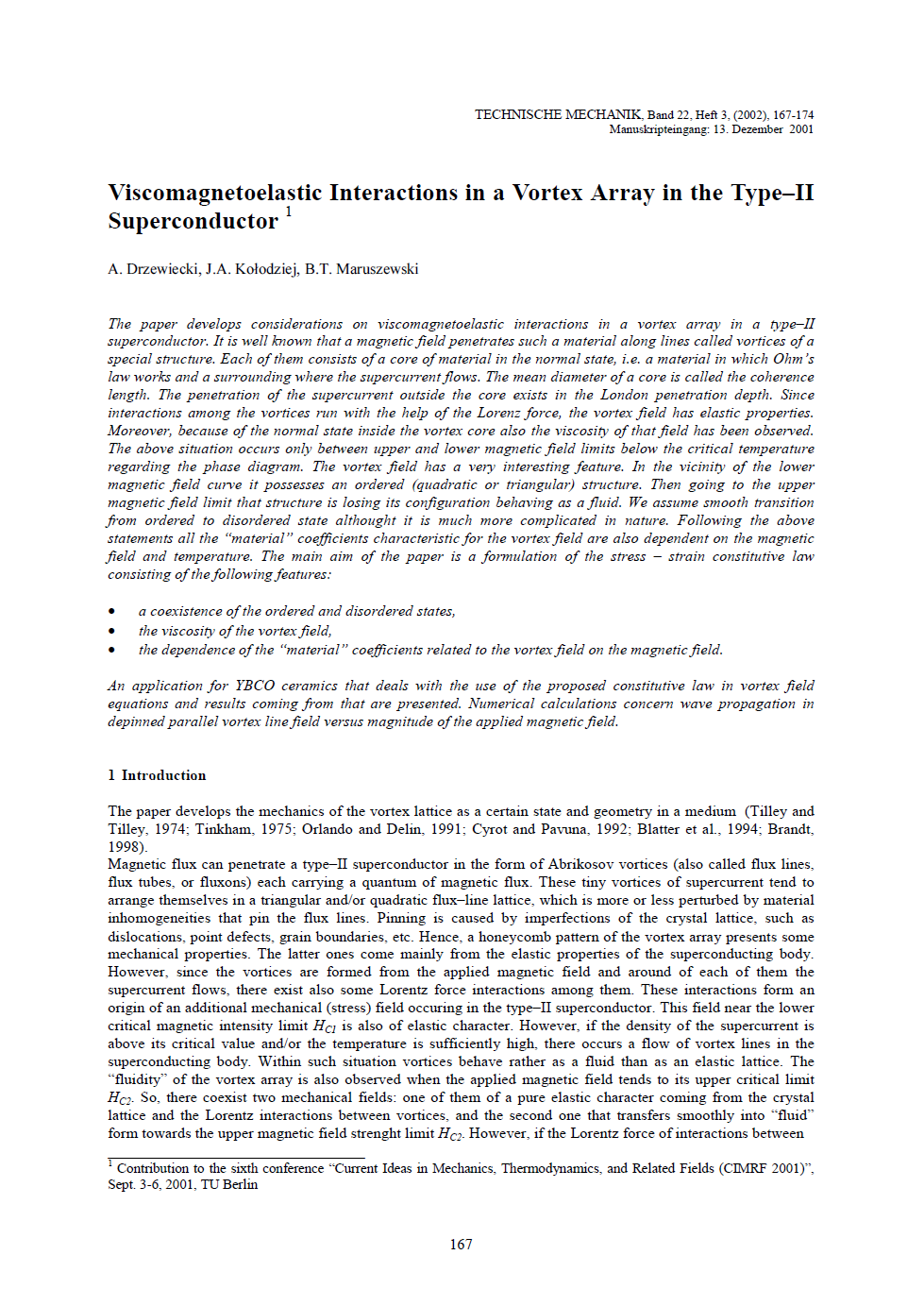Viscomagnetoelastic Interactions in a Vortex Array in the Type–II Superconductor
Abstract
The paper develops considerations on viscomagnetoelastic interactions in a vortex array in a type–II superconductor. It is well known that a magnetic field penetrates such a material along lines called vortices of a special structure. Each of them consists of a core of material in the normal state, i.e. a material in which Ohm’s law works and a surrounding where the supercurrent flows. The mean diameter of a core is called the coherence length. The penetration of the supercurrent outside the core exists in the London penetration depth. Since interactions among the vortices run with the help of the Lorenz force, the vortex field has elastic properties. Moreover, because of the normal state inside the vortex core also the viscosity of that field has been observed. The above situation occurs only between upper and lower magnetic field limits below the critical temperature regarding the phase diagram. The vortex field has a very interesting feature. In the vicinity of the lower magnetic field curve it possesses an ordered (quadratic or triangular) structure. Then going to the upper magnetic field limit that structure is losing its configuration behaving as a fluid. We assume smooth transition from ordered to disordered state althought it is much more complicated in nature. Following the above statements all the “material” coefficients characteristic for the vortex field are also dependent on the magnetic field and temperature. The main aim of the paper is a formulation of the stress – strain constitutive law consisting of the following features:
• a coexistence of the ordered and disordered states,
• the viscosity of the vortex field,
• the dependence of the “material” coefficients related to the vortex field on the magnetic field.
An application for YBCO ceramics that deals with the use of the proposed constitutive law in vortex field equations and results coming from that are presented. Numerical calculations concern wave propagation in depinned parallel vortex line field versus magnitude of the applied magnetic field.





